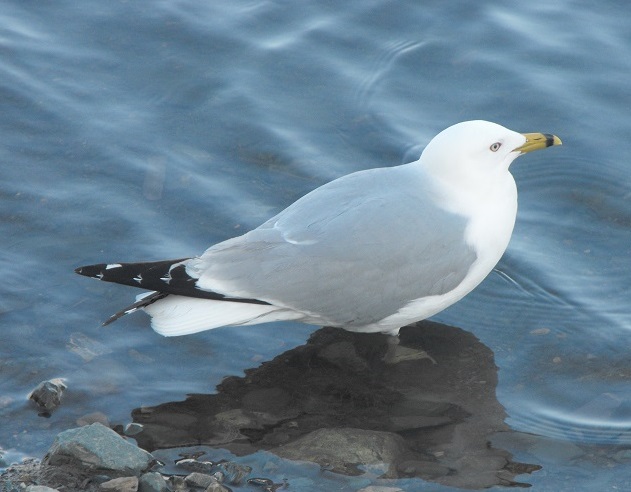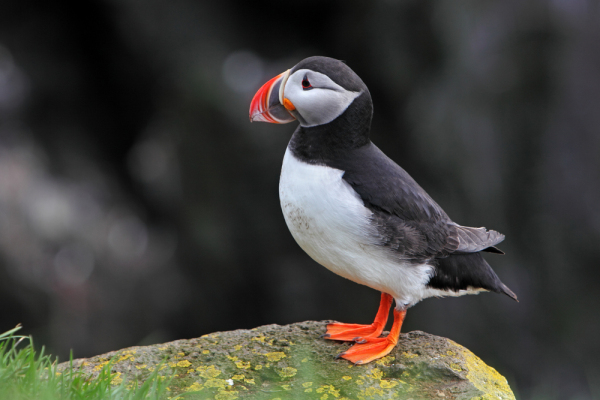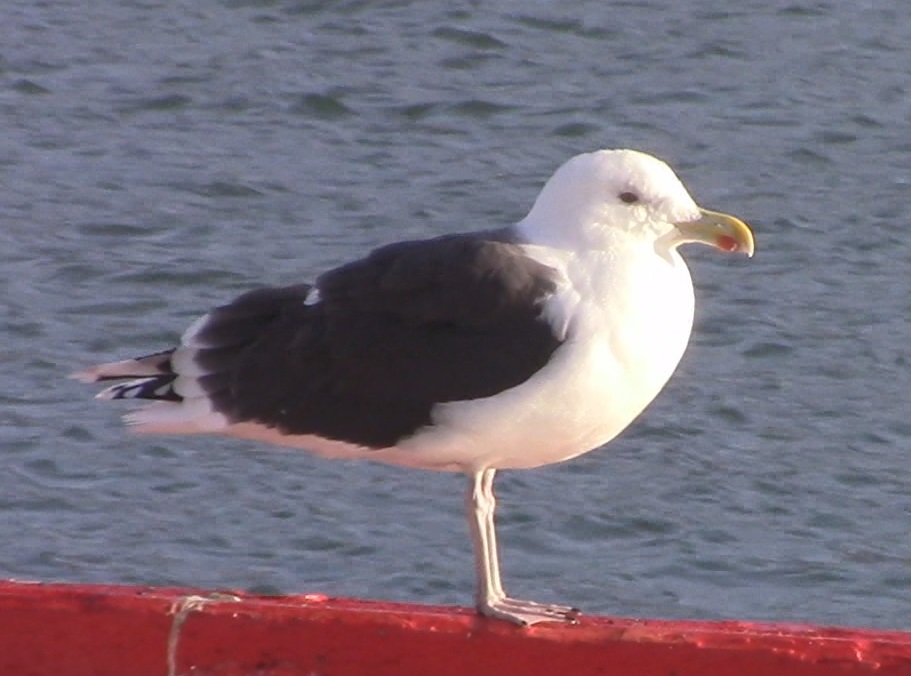Charadriiformes are an order of birds that consists of 19 families, including; Alcidae(auks, murres, and puffins), Laridae(gulls, terns, and skimmers), and Scolopacidae(sandpipers and allies).
Physical Characteristics
This order is a varied collection of birds linked by similarities in bodily features; including their skeletons, plumage, and developmental patterns.

Distribution and Habitat
This order is worldwide in distribution, and are found in almost every terrestrial habitat on earth, and many also occur in marine habitats.
Diet
The birds of the order Charadriiformes eat: snails, mussels, oysters, marine worms, insects, berries, earthworms, algae, limpets, fish, the eggs and nestlings of other birds, seeds, buds, shoots, leaves, rodents, small birds, carrion, garbage, some vegetable material, and shrimp.
Families

Alcidae. The Alcidae family consists of; auks, auklets, The Dovekie(Alle alle), guillemots, murres, murrelets, puffins, and the Razorbill(Alca torda). These seabirds are found in the northern hemisphere. They primarily feed on fish and aquatic invertebrates.
Burhinidae. The Burhinidae family is made up of the thick-knees, also known as stone-curlews, these are terrestrial shorebirds that are found in tropical and subtropical regions of the world.
Charadriidae. Charadriidae is a family of shorebirds known as plovers. These birds can be found in a wide variety of habitats throughout the world. Plovers eat invertebrates.
Chionidae. The Chionidae family consists of sheathbills, these are seabirds that are found in the southern oceans. Sheathbills eat penguin eggs and chicks, and carrion. There are only two species of sheathbills; the Snowy Sheathbill(Chionis albus) and the Black-Faced Sheathbill(Chionis minor).
Dromadidae. The Crab Plover(Dromas ardeola) is the only species classified in the Dromadidae family. The Crab Plover is a shorebird of Indian Ocean Coasts. It is black and white in color, and reaches lengths of about 40 centimeters(1’4”). Crab Plovers dig burrows about 1.5 m (5 feet) deep in sandbanks.
Glareolidae. The Glareolidae family consists of pratincoles and coursers. These birds feed mainly on insects. Pratincoles and coursers are found in Africa, southern Eurasia, and Australia.
Haematopodidae. Haematopodidae is a family of shorebirds knows as oystercatchers. These birds are found along the coasts of much of the world. Oystercatchers use their long red bills to pry or hammer open marine invertebrates.
Ibidorhynchidae. The Ibisbill(Ibidorhyncha struthersii) is the only bird classified in the Ibidorhynchidae family. Ibisbills live beside mountain streams of central Asia. The Ibisbill uses its long, decurved bill to forage for invertebrates among rocks. The Ibisbill is approximately 40 centimeters (16 inches) long.
Jacanidae. The Jacanidae family is made up of Jacanas, also known as lily-trotters or lotus birds. Jacanas are equipped with long straight claws, these claws are advantageous for walking on floating vegetation in tropical freshwater marshes. Jacanas eat invertebrates.

Laridae. The Laridae family consists of; gulls, terns, skimmers, kittiwakes, and noddies. This family is greatly distributed throughout the world. Even though the Laridae family is largely associated with water, many species can be seen in terrestrial environments. Some of these birds, such as the Ring-Billed Gull(Larus delawarensis), and the Herring Gull(Larus argentatus) have even adapted to urban areas, such as: parking lots, sports fields, and even garbage dumps. The Great Black-Backed Gull(Larus marinus) is the largest gull in the world; it weighs up to 2 kg(4.4 pounds), and can grow to lengths of 79 cm(2’7″), its wingspan can reach 1.6 m(5’3″)
Pedionomidae. The Plains-Wanderer(Pedionomus torquatus),also known as the Collared Hemipode, is the only species classified in the Pedionomidae family. The Plains-Wanderer is a small terrestrial bird from the outback of Australia. This species is mostly nocturnal, and its diet consists primarily of seeds and insects.
Pluvianellidae. The Magellanic Plover(Pluvianellus socialis) is the only species classified in the Pluvianellidae family. The Magellanic Plover is a pink-legged shorebird found in South America. This species eats invertebrates.
Pluvianidae. The Egyptian Plover(Pluvianus aegyptius) is the only species classified in the Pluvianidae family. This shorebird can be found in northern and central Africa. The Egyptian Plover lives near freshwater, and eats mainly invertebrates.
Recurvirostridae. Avocets and stilts make up the Recurvirostridae family. This family of long-legged shorebirds have a worldwide distribution. Avocets and stilts eat invertebrates.
Rostratulidae. The Rostratulidae family consists of small shorebirds known as painted-snipes. This avian family can be found in tropical and subtropical marshes. Painted-snipes eat invertebrates.

Scolopacidae. The Scolopacidae family is made up of sandpipers and there allies. This is the largest family of shorebirds in the world.
Stercorariidae. The Stercorariidae.family consists of jaegers and skuas. Jaegers and skuas are seabirds that can be found in oceans globally, but they restrict their breeding to high latitudes.
Thinocoridae. The seedsnipes make up the Thinocoridae family. Seedsnipes are shorebirds that live in South America. Seedsnipes feed mainly on seeds and other vegetation.
Turnicidae. The Turnicidae family consists of buttonquail, Buttonquail are shorebirds that are found in the old world. Buttonquail feed primarily on seeds and insects.
Fun Facts
- The Snowy Sheathbill(Chionis albus), is also known as the Greater Sheathbill, and Pale-Faced Sheathbill.
- The Black-Faced Sheathbill(Chionis minor), is also known as the Lesser Sheathbill.
- When migrating; some species of sandpipers fly non-stop for thousands of kilometers.
- The Norwegian municipality of Værøy has a puffin as its civic emblem.
- The island of Lundy in the United Kingdom is reputed to derive its name from the Norse lund-ey or “puffin island”.
- Puffins have been given a number of informal names including “clowns of the sea” and “sea parrots”.
- Puffin chicks are known as “pufflings.”
